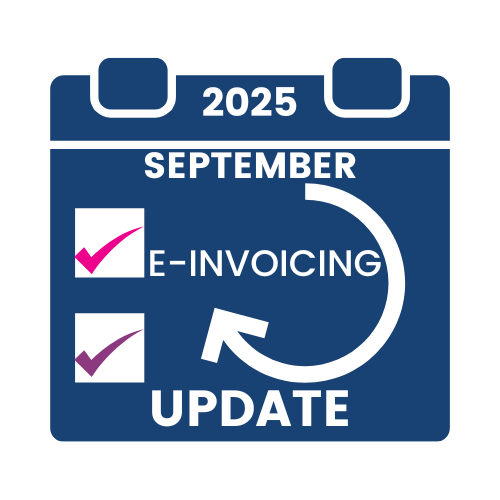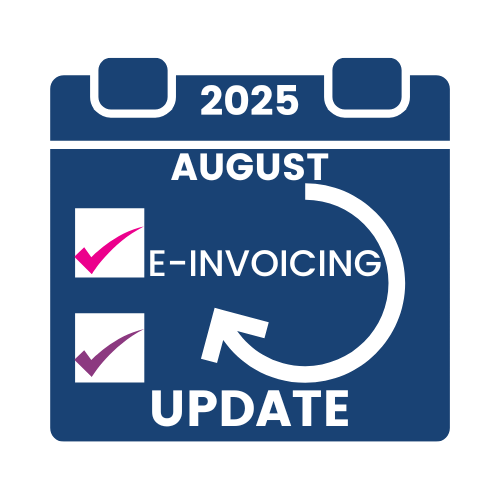Accounts Payable teams often handle millions of pounds in transactions, making them prime targets for fraud. With the increasing sophistication of fraudsters, it’s fundamental for companies to adopt measures that strengthen their defences. AP automation positions itself as one of the most effective ways to prevent (and detect) fraud, protecting businesses from financial losses and reputational damage
Types of Financial Fraud
Types of Financial Fraud fall into four main categories that target the AP teams. Understanding this cybercrime landscape is the first step in mitigating risks.
Invoice Fraud: Fake or inflated invoices submitted by vendors or ‘fake suppliers’ to extract payments for services or goods not delivered. This can occur when a fraudster infiltrates vendor systems or creates fake suppliers.
Payment Fraud: Often involves unauthorised changes to payment details (like bank accounts), leading to funds being diverted to fraudulent accounts.
Employee Fraud: Collusion between employees and external parties can lead to misappropriation of funds or falsified expense claims. H3 Procurement Fraud: When fraudsters manipulate procurement processes, inflating costs or creating ghost suppliers to siphon off funds.
Spotting these fraudulent attempts is made increasingly difficult when AP teams are working with manual processes. The high volume of invoices processed by AP departments, combined with insufficient verification protocols, makes it difficult to spot fraudulent activity in time.
How AP Automation Prevents Fraud
Automation can address many of the vulnerabilities inherent in manual AP processes. Below are the key components of AP automation that help prevent fraud.
Enhanced Invoice Verification: intelligent document and data capture uses Ai to capture the relevant data and verifies it against a Vendor Master Data and checks required information such as PO number and for duplicates, and picks up any anomalies. If found the automation solution can be configured to return the invoice to the supplier for resubmission.
Once the data is captured, AP automation matches invoices with purchase orders and delivery receipts, flagging any discrepancies and creating a workflow for the management of these exceptions This ensures that only valid and approved invoices are paid. Non PO invoices can also be automated based on business rules. Both PO and Non PO invoice exceptions are managed in an AI powered workflow that learns from user actions for further streamlining.
Segregation of Duties: using an automation solution ensures that different tasks, such as invoice approval and payment authorization, are handled by different individuals or teams, reducing the risk of internal fraud.
Audit Trail: Every action within an automated AP system is logged and traceable. This makes it easier to identify who authorised specific payments, and when, creating transparency across the entire process.
Vendor Validation: AP automation can use supplier onboarding to ensure that the vendor data only holds approved suppliers and is reviewed and maintained by approved users, often with the same segregation that is utilised for invoice/PO approval. The solution will flag any unauthorised or unfamiliar entities attempting to submit invoices.
How AI in AP Automation Can Help Identify Fraud
Artificial Intelligence (AI) adds an extra layer of protection by continuously learning and improving its ability to detect fraudulent activity. AI-powered AP solutions offer:
Anomaly Detection: AI can learn typical spending patterns, allowing it to flag unusual transactions, such as payments to new vendors, abnormal invoice amounts, unusual times of transactions or changes in payment methods. This is often done in real-time, preventing fraudulent payments before they occur.
Predictive Analysis: Machine learning algorithms can predict potential fraud risks by analysing historical data and identifying emerging fraud patterns. The system gets smarter over time, refining its ability to detect fraud.
Advanced Data Correlation:
AI tools can scan vast amounts of data quickly, correlating different data points (e.g., comparing supplier histories with invoice submissions) to uncover fraud that might go unnoticed by manual reviews.
New Frauds to Be Aware Of
As technology evolves, so do fraud techniques. Some emerging fraud types AP teams need to be aware of include:
Deepfake Fraud: Fraudsters use deepfake technology to mimic the voices or emails of high-level executives, tricking AP teams into approving large payments to fraudulent accounts. These often have a sense of urgency that plays on human nature to react quickly, perhaps without going through the usual checks.
Ransomware Attacks: Cybercriminals encrypt company data and demand ransom payments, targeting businesses with weak cybersecurity in their IT systems.
Synthetic Identity Fraud: This involves creating fake identities using a combination of real and fabricated information, often used to set up fraudulent vendors or submit bogus invoices.
Being aware of these new types of fraud is essential in keeping defences up-to-date and ensuring that AP processes remain secure.
Education Helps Prevention
Even with the best technology in place, education remains a crucial component of fraud prevention. Fraudsters continuously adapt, and without the knowledge to recognise emerging threats, even the most advanced systems can fall victim to human error. Regular training sessions should be part of every AP team’s routine to ensure staff can identify the warning signs of fraud, such as unusual invoice requests, sudden changes in payment details, or vendors requesting payment through non-standard methods. Recognising these red flags can stop fraud in its tracks before any damage is done.
Employees should also be educated about the latest fraud tactics, including sophisticated phishing schemes, deepfake technology, and social engineering. Cybercriminals are increasingly using psychological manipulation to exploit human behaviour, making it essential for employees to be aware of how their actions and interactions can be manipulated to facilitate fraud. For example, fraudsters might send emails appearing to be from trusted executives, pressuring AP staff to rush through payments without proper verification.
Behavioural Challenges
One of the biggest hurdles in fraud prevention is human behaviour. Even the best-trained teams may inadvertently bypass safety measures under pressure, particularly when dealing with urgent requests from senior management. Fraudsters often exploit this urgency by mimicking high-level executives in emails, asking for immediate payments and bypassing normal approval processes. Training should emphasize the importance of adhering to protocols regardless of external pressures.
Another challenge is complacency. Employees who have never experienced fraud firsthand may become overconfident in the system’s ability to detect fraud on its own. Training should not only inform employees about potential threats but also actively engage them in simulations and tests to sharpen their vigilance.
Creating a Fraud-Aware Culture: Beyond technical training, organisations need to foster a culture of transparency, accountability, and shared responsibility. This culture encourages employees to speak up if they notice something suspicious without fear of retaliation. One of the behavioural barriers to fraud prevention is the fear of being wrong or causing disruption.
AP teams must understand that flagging a potential issue, even if it turns out to be a false alarm, is always better than allowing unchecked activity. Companies should establish clear reporting channels, with whistleblower policies in place to empower employees to report fraud or unethical behaviour. Ensuring that management and leadership teams visibly support these initiatives will build trust within teams, making them more vigilant and proactive in combating fraud.
Incorporating ongoing education and fostering a fraud-aware culture are vital in building an effective defence against fraud. Combining these with technology creates a holistic approach to fraud prevention that goes beyond automation and AI, recognising the critical role of human behaviour and awareness.
Conclusion
AP automation is a critical tool for defending against the ever-evolving threat of financial fraud. By leveraging AI-driven solutions, businesses can stay ahead of fraudsters, reducing the risk of financial losses. However, combining this technology with ongoing staff education and vigilance is key to creating a robust fraud prevention strategy.
Even with the best technology, education is a crucial component of fraud prevention. Regularly training AP staff to recognise signs of fraud is vital.
In addition, fostering a culture of transparency and accountability, where employees feel empowered to report suspicious activity without fear of reprisal, can significantly reduce the risk of internal fraud.
To find out more, join us for a 20 min Q&A session on 23rd October at 10.30 with our Expert Guest Speaker Robert Brooker, Cyber Fraud specialist and Director of UK Identity Fraud Advisory, a social enterprise founded in 2022 to help protect individuals and support businesses. Register here:





